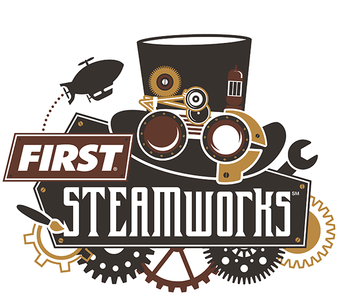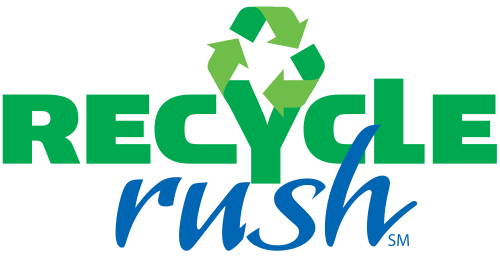2024 Game: Crescendo
Lakota Robotics | Current Game, Game Announcements
2024 Game: Crescendo
Check out this year’s game video!
Robot Name: VioLinda
Field and Scoring
Crescendo is played on a 27 feet (8.2 m) by 54 feet (16 m) field covered in grey carpet. The field is surrounded by low polycarbonate walls on the long sides and taller alliance station walls on the short sides. The two Amps on the long sides are connected to the alliance stations by a taller wall made of wire mesh panels.
The field is divided in half by a white line, with each half including an alliance’s Wing, Stage Zone, and Amp Zone and the other alliance’s Source Zone. Alliances work to score Notes at their Speaker, located on the left side of their opponent’s alliance station. Robots can also score Notes at their Amp on their side of the field. At the end of the match, robots move to their Stage and climb chains to earn additional points.
Game Pieces
The only game piece in Crescendo is the Note. Notes are orange foam tori with a 10 inches (254 mm) inside diameter and 14 inches (356 mm) outside diameter with a thickness of 2 inches (50.8 mm). High Notes are a variety of Note and are marked by three equidistant pieces of white tape wrapped around the torus.
Player Areas
Alliance Stations
There are two alliance stations on the short sides of the field, one for each alliance. Each station is divided into three smaller driver’s stations where the teams that make up the alliance control their robots. In addition to the standard e-stop button, each driver’s station now includes an autonomous stop (a-stop) that can be used to stop a robot during the autonomous period. Once the autonomous period ends, the a-stop expires and returns control of the robot to the team. The team number displays hung above the driver’s stations have also been upgraded to support five-digit teams.
Human Player Stations
The only type of human player station in Crescendo is the Source. The two Sources (one per alliance) are used by human players to introduce Notes into the field using a chute and are located on the other side of the field from an alliance’s Alliance Station. Robots can navigate to the Source using two AprilTags mounted on the left and right sides of the chute.
Scoring Areas
Amps
The two Amps are located on the same side of the field as their alliance’s station. Once two Notes are scored in an Amp, a human player can press a button to amplify their alliance’s Speaker points for ten seconds or until 4 notes are scored. Once the amplification ends, another two Notes must be scored before it can be reactivated. If both alliances score a Note in their Amp in the first 45 seconds of the teleoperated period, they can press another button to earn a coopertition bonus. A Note used to earn the bonus cannot be used to amplify the Speaker.
Speakers
Each alliance has one Speaker located in between the left and center Alliance Stations of the opposing alliance. Each speaker includes an opening through which Notes can be scored, with the lowest edge of the opening 6.5 feet (2.0 m) above the carpet and the highest edge 6.9 feet (2.1 m) above the carpet. The opening is 3.42 feet (1.04 m) wide and extends 2.33 feet (0.71 m) into the field. Each Speaker also includes a Subwoofer that indicates whether the Speaker has been amplified and the amount of time left on the amplification. Alliances can earn the Melody Ranking Point (RP) by scoring at least 18 Notes in the Amp and Speaker. This threshold is reduced to 15 Notes if the coopertition bonus is earned.
Stages
The two Stages are three-legged trusses located 10.08 feet (3.07 m) from its corresponding Alliance Station. Each Stage includes a six-sided Core suspended approximately 2.33 feet (0.71 m) above the carpet and three metal chains connected between the legs of the truss. The chains droop to a height of 2.33 feet (0.71 m) above the carpet and rest 1.33 feet (0.41 m) away from the Core. The three wider sides of the Core also include a Trap where a Note can be scored, with the bottom of the Trap located 4.67 feet (1.42 m) above the carpet.[4]
During the endgame, robots can earn points by climbing on the chains. An alliance can also earn the Ensemble RP by scoring at least 10 Stage points while having at least two climbing robots. Harmony points can also be earned if two robots successfully climb on the same chain. If a human player successfully tosses a High Note onto one of three pegs (known as a Microphone) on top of the Stage, any robots directly below that Microphone are Spotlit and earn additional climb points.
Scoring Summary
| Action | Autonomous | Teleoperated | Ranking Points(in Qualification) | Coopertition Points |
|---|---|---|---|---|
| Robot exits Starting Zone | 2 points | |||
| Note scored in Amp | 2 points | 1 point | ||
| Note scored in Speaker (Not amplified) | 5 points | 2 points | ||
| Note scored in Speaker (Amplified) | 5 points | |||
| Note scored in Trap | 5 points | |||
| Climb (Not Spotlit) | 3 points | |||
| Climb (Spotlit) | 4 points | |||
| Park | 1 point | |||
| Harmony | 2 points | |||
| Melody Bonus | 1 RP | |||
| Ensemble Bonus | 1 RP | |||
| Coopertition Bonus | Melody Bonus threshold reduced to 15 for both alliances | 1 point | ||
| Win | 2 RP | |||
| Tie | 1 RP | |||
| Foul | 2 points to opposing alliance | 2 points to opposing alliance | ||
| Tech Foul | 5 points to opposing alliance | 5 points to opposing alliance |





















